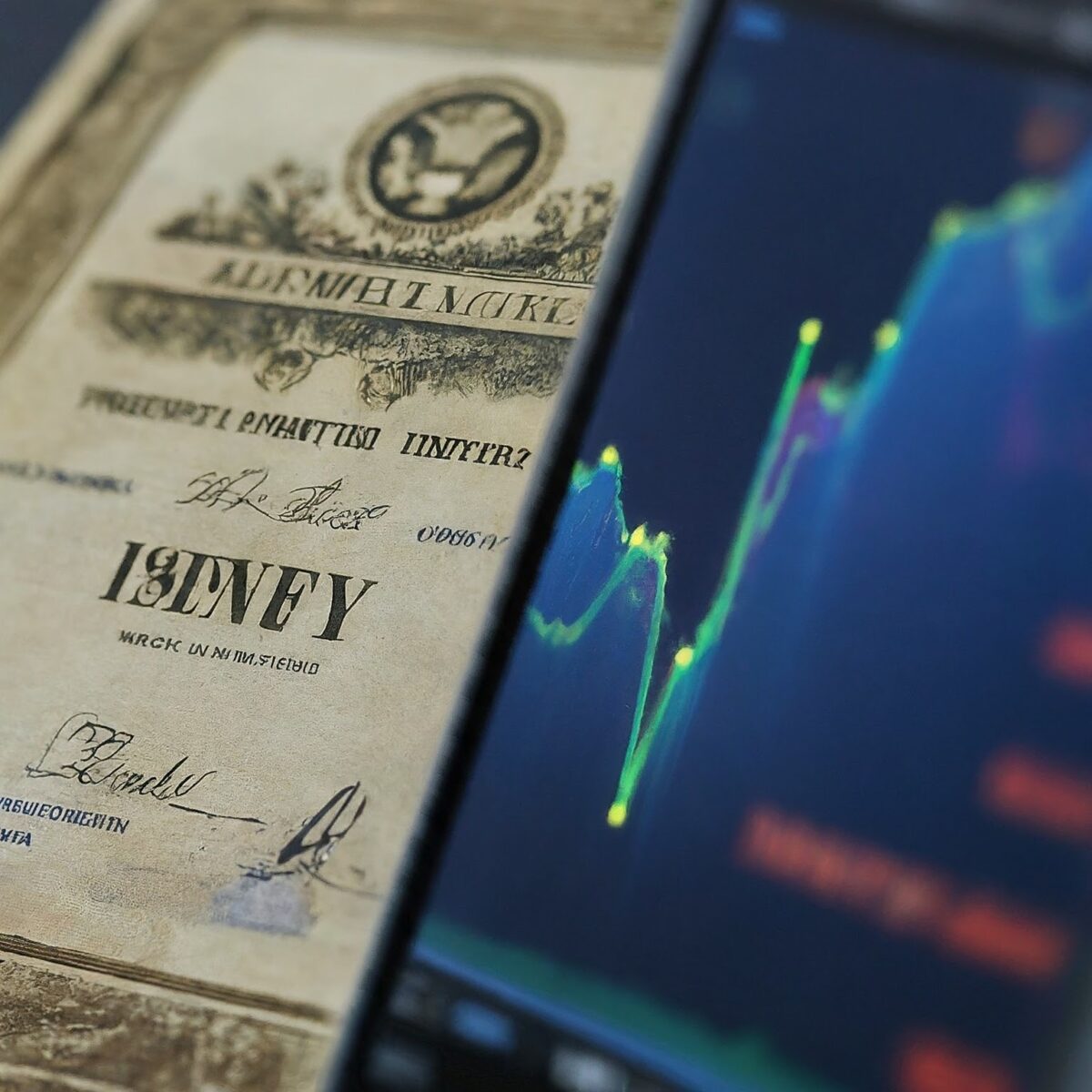Wall Street to Main Street: 9 Key Things to Know About Tokenisation of NYSE, Treasuries, and Gold
The financial world is abuzz with talk of tokenisation, a process of converting traditional assets like stocks, bonds, and even commodities like gold into digital tokens. This digital revolution has the potential to reshape not just Wall Street, but also Main Street, impacting how everyday consumers interact with their finances. Buckle up, because we’re diving into the world of tokenised assets and what it means for you.
1. Tokenization 101: Slicing and Dicing Assets
Imagine a stock certificate – a physical representation of your ownership in a company. Now, imagine breaking that certificate into smaller, digital pieces. Each piece, a unique cryptographic token, represents a fraction of the original stock. That’s tokenisation in a nutshell. It allows for the fractional ownership of assets, making them more accessible to a wider range of investors.
2. The Big Three: NYSE, Treasuries, and Gold Go Digital
The tokenisation of the New York Stock Exchange (NYSE) could revolutionise stock ownership. Individual shares could be divided into smaller tokens, allowing for greater participation from retail investors. This could potentially lead to a more democratised stock market, where even those with limited funds can invest in major companies.
US Treasuries, the bedrock of American finance, could also be tokenised. This could increase their liquidity and global reach, making them even more attractive to investors worldwide. Tokenised Treasuries could also open doors for new financial products, like Treasury-backed bonds with shorter maturities.
Gold, a timeless safe-haven asset, could benefit from tokenisation by increasing its accessibility. Smaller gold tokens would allow even the most budget-conscious investor to own a piece of the precious metal. This could potentially make gold a more viable option for diversifying one’s portfolio.
3. Benefits Abound: Efficiency, Transparency, and Beyond
Tokenisation offers a multitude of advantages. Transactions could become faster and cheaper, as the need for intermediaries like clearinghouses is reduced. Increased transparency is another perk, with transactions recorded on a secure blockchain ledger, accessible to all participants. Additionally, fractional ownership opens doors for a wider range of investors, potentially leading to a more robust and inclusive financial system.
4. Security Concerns: Are My Tokens Safe?
As with any new technology, security is a paramount concern. Hacking and cyberattacks are potential threats to tokenised assets. Regulatory frameworks need to be established to ensure the safekeeping of these digital valuables.
5. The High Street Gets a Tech Upgrade: How Tokenisation Affects Consumers
The impact of tokenised assets extends beyond professional investors. Here’s how Main Street might be affected:
- Easier Investing: Tokenisation can make investing more accessible. Fractional ownership allows people with limited savings to participate in the stock market or own a piece of gold.
- New Investment Products: Tokenisation could pave the way for innovative financial products tailored to everyday consumers. Imagine micro-investing platforms allowing you to invest spare change in tokenised assets.
- Democratising Finance: Tokenisation has the potential to level the playing field, giving everyone a shot at participating in the financial markets, not just the wealthy elite.
6. Challenges for Consumers: Understanding the Risks
While tokenisation offers exciting possibilities, there are challenges for consumers to consider:
- Complexity: Understanding the intricacies of tokenised assets and the associated risks might be daunting for some.
- Volatility: The inherent volatility of some assets, like stocks and gold, remains a concern even when they’re tokenised.
- Regulation: The regulatory landscape surrounding tokenised assets is still evolving. Consumers need to be cautious of unregulated platforms and potential scams.
7. The Role of Banks and Financial Institutions
Banks and financial institutions have a crucial role to play in the tokenisation revolution. They can:
- Develop User-Friendly Platforms: Creating user-friendly platforms for buying, selling, and managing tokenised assets is essential for wider adoption.
- Educate Consumers: Equipping consumers with the knowledge and tools to make informed decisions about tokenised assets is paramount.
- Partner with Fintech Companies: Collaboration between traditional financial institutions and innovative fintech companies can accelerate the safe and secure adoption of tokenisation.
8. The Future of Finance: A Tokenised World?
While the future remains unwritten, tokenisation has the potential to reshape the financial landscape. A world where assets are easily divisible, transactions are streamlined, and access is broadened could be on the horizon. However, navigating this new frontier requires a cautious approach, with robust regulations and consumer education at the forefront.
9. The Bottom Line: Be Informed, Be Cautious, Be Open
The tokenisation of the NYSE, Treasuries, and gold presents both opportunities and challenges for consumers. While the potential for greater access, efficiency, and innovation is undeniable, understanding the risks and navigating the complexities of this new landscape is crucial. As the world of finance continues to evolve, staying informed, exercising caution, and keeping an open mind to the possibilities will be key to navigating the exciting, and potentially transformative, world of tokenised assets.
Here are some additional points to consider:
- Impact on Retirement Planning: Tokenisation could potentially revolutionise how people save for retirement. Imagine tokenised retirement accounts with more diversified options, including fractional ownership of assets.
- Global Investment Opportunities: Tokenisation could break down geographical barriers, allowing easier access to international markets for everyday investors.
- The Power of Blockchain: Blockchain technology, the secure ledger system underlying tokenisation, offers numerous benefits. Its immutability ensures transparency and reduces the risk of fraud.
The future of tokenisation is still unfolding, and the potential impact on the financial landscape is vast. It’s a wave of change that could reshape how we invest, save, and ultimately, build our financial future. By staying informed and approaching this new frontier with a cautious yet open mind, consumers can potentially reap the benefits of a more accessible and efficient financial system.
